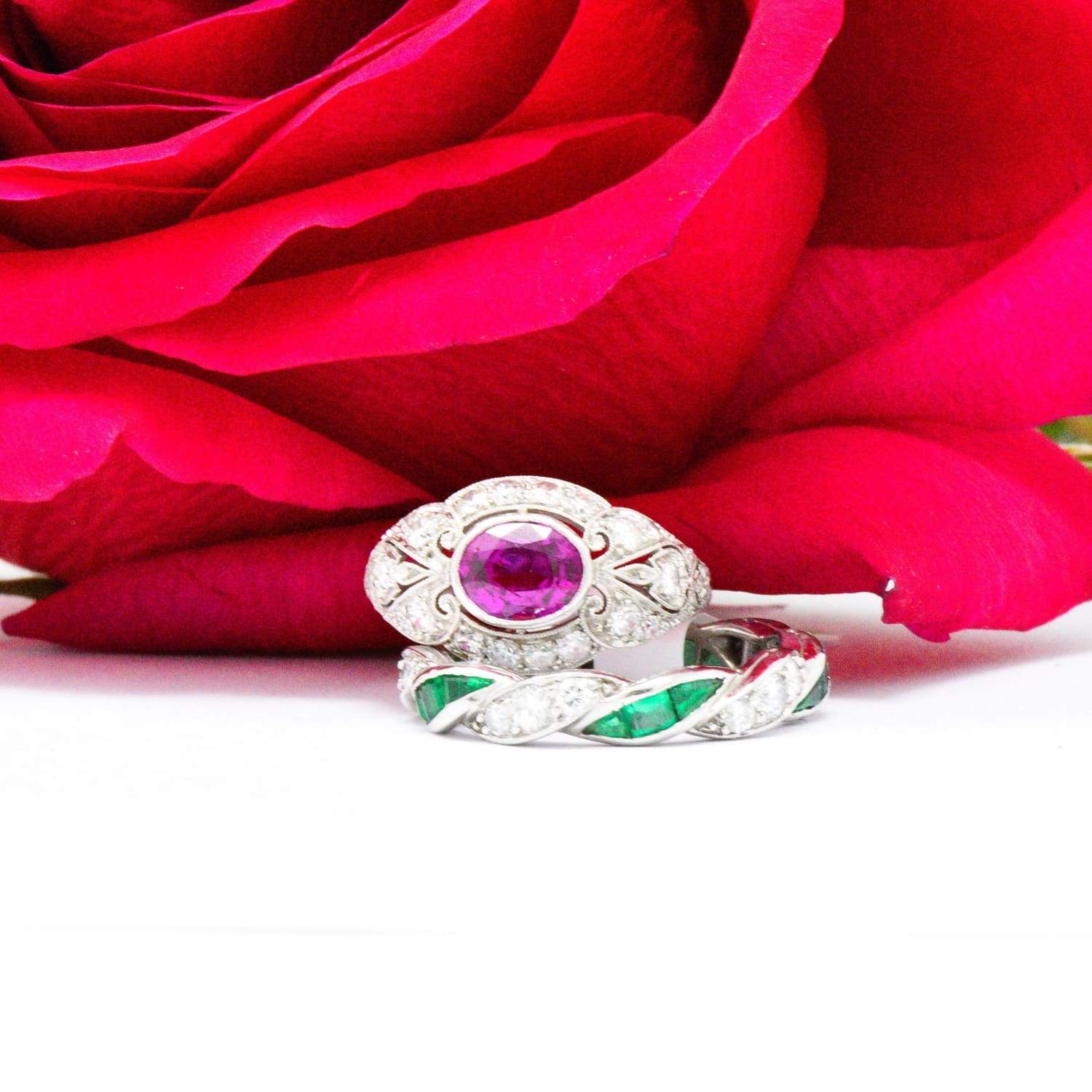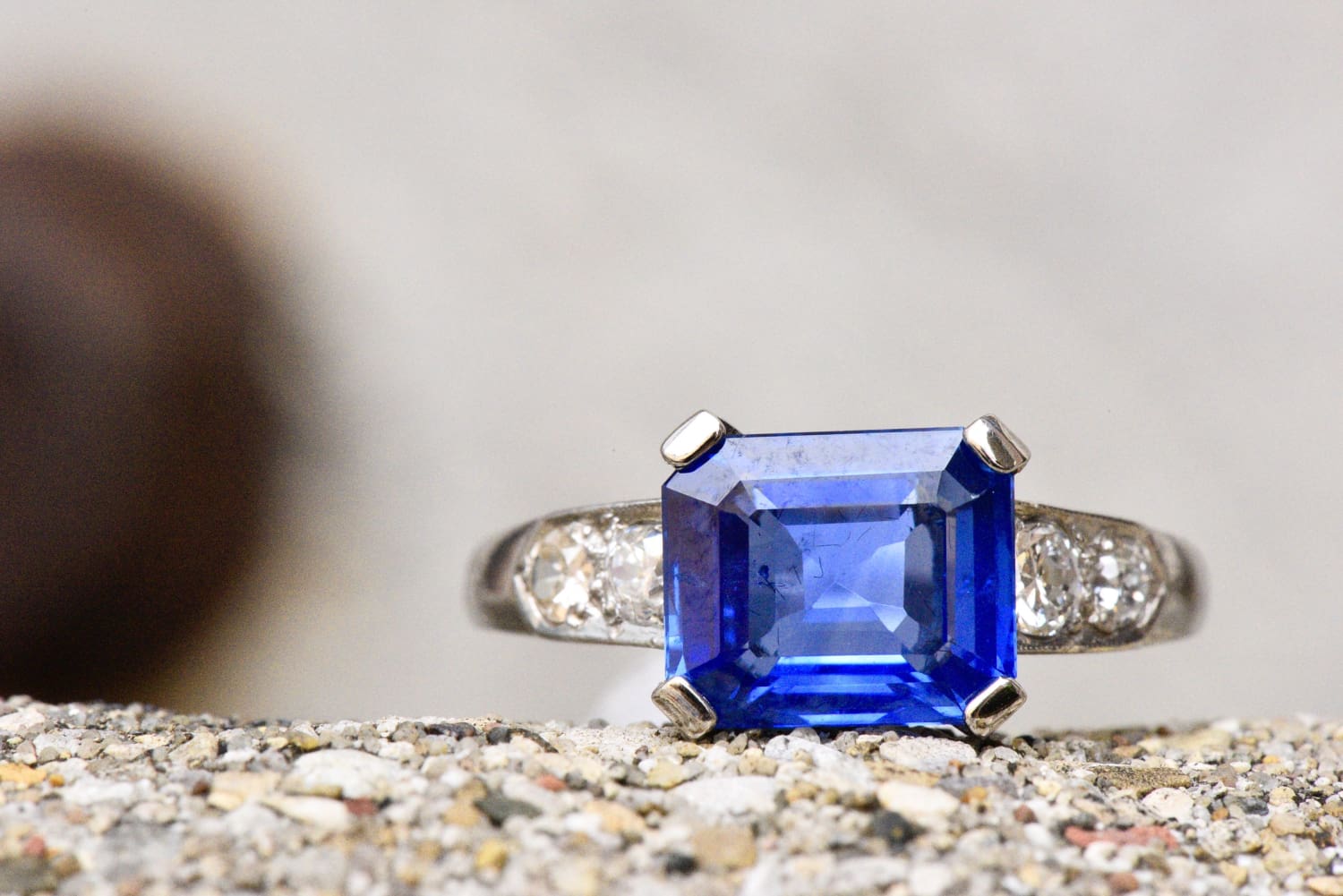
Why Are Burmese Sapphires and Rubies Considered Rare?
Burma Sapphires and Rubies
Burmese rubies and sapphires are renowned for their beauty and splendor. They have a particular sparkle and are rich in color saturation. The rubies from Myanmar (formerly Burma) are found in the Mogok mining region. There are large deposits of rubies and the sapphires from this area are more rare. Star sapphires of incredible quality have also been found in this in the locale.
Burmese Stones are Relatively Young
If you are familiar with the creation of precious gemstones, you know that they can take several hundred thousands of years to form naturally. For rubies and sapphires to form there must be a very certain and specific combination of events.
First there must be a source of corundum which is a rare substance . It is created when aluminum oxide undergoes an isomorphous process, replacing aluminum ions with chromium to create the red hue associated with rubies. When traces of titanium and iron enter the mix, sapphires are formed. If these deposits are too near abundant silica or iron the gemstones will fail to form.

So, what happened in Burma? Tectonic movement was the inciting factor in the creation of these gorgeous stones. Although all necessary elements had been in proximity, it wasn’t until the Indian and Asian subcontinents collided between 4 and 5 million years ago that gemstones started taking shape.
Burmese rubies and sapphires are considered relatively young in relation to deposits now being discovered in the Pan-African region. They date back to 450-750 million years ago. Burmese stones continue to outshine their older counterparts mined in Mozambique.

Burmese Stones Have Special Qualities
What sets Burmese rubies and sapphires apart from others found across the globe? The intensity of color and the exquisite luster are unmistakable. These stones feature a network of tiny inclusions known as “silk” that scatter light to add softness and sparkle. The rich, red hue of Burmese rubies can be attributed to a bluish body color paired with a true red fluorescent emission.
Burmese sapphires are frequently found in close proximity to the rubies. Similar qualities contribute to their intensely saturated blue tones. Sapphire sizes in this region can be quite impressive. A gem of nearly 1,000 carats has been documented and as recently as 1994, a 502-carat sapphire was mined from Burma’s Mogok Stone Tract.

Mining is Declining
In 1997 U.S. sanctions on Burmese gemstones (now lifted) were blamed for a limited supply of stones on the market. This was an inaccurate assessment because other countries continued to purchase the stones. More accurately, the mines have been in operation for an estimated 800 years and the desirable specimens are buried deep in hard rock. It is expensive and difficult to mine these areas so rubies and sapphires of this caliber are becoming fewer in quantity.
If you are certain that you want a Burmese sapphire or ruby it is imperative that you locate vintage stones from qualified jewelers such as Wilson’s Estate Jewelry. You will be pleased with their professionalism, courtesy and expediency.



Leave a comment
This site is protected by hCaptcha and the hCaptcha Privacy Policy and Terms of Service apply.